After 110 years, Nam Dinh Textile Plant must be moved to Hoa Xa Industrial Park to ensure environmental protection. However, the image of a plant that was once the biggest in Indochina still exists in the mind of many generations of Nam Dinh residents..
Nam Dinh Textile Plant was once known as the biggest in Indochina. Its predecessor was a research institute focusing on silk established by Indochina’s Governor De Lanessan (1887-1888). In 1898, Governor Paul Doumer allowed a silk plant to be built in Nam Dinh City with six steam engines. In 1924, it had 6,000 workers. Till 1939, the plant consisted of three thread warehouses, three textile workshops, one dying workshop, one blanket factory, one mechanic workshop and one locomotive workshop.

Nam Dinh Textile Plant used to be a research institute on silk established by Governor De Lanessan.
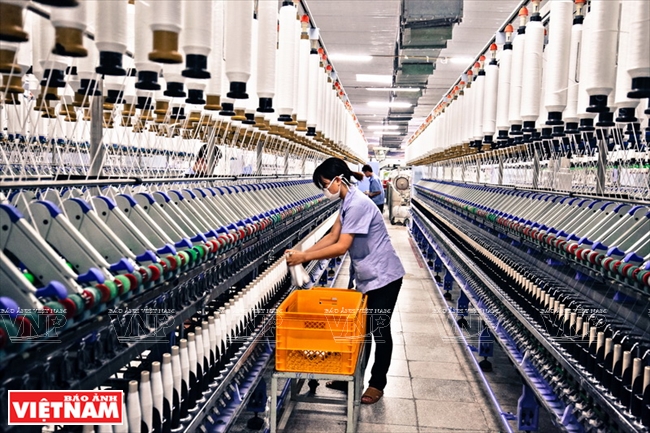
The image of Nam Dinh Textile Plant is used as the symbol of Vietnam industry in the renewal period and
printed on the 2,000VND note of the State Bank of Vietnam. Photo: Cong Dat/VNP
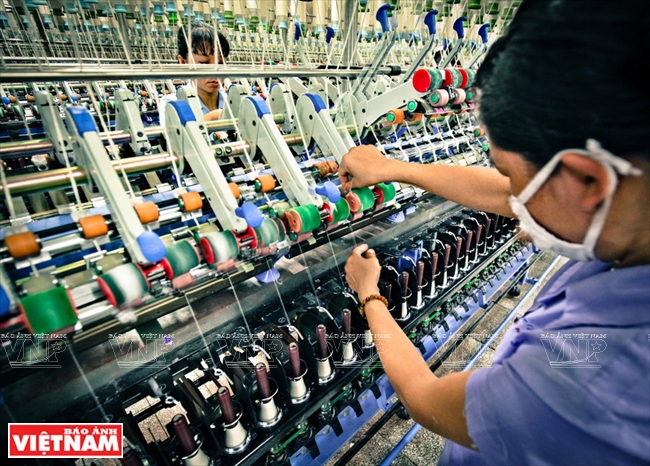
Now some thread and textile workshops are still working. Photo: Cong Dat/VNP
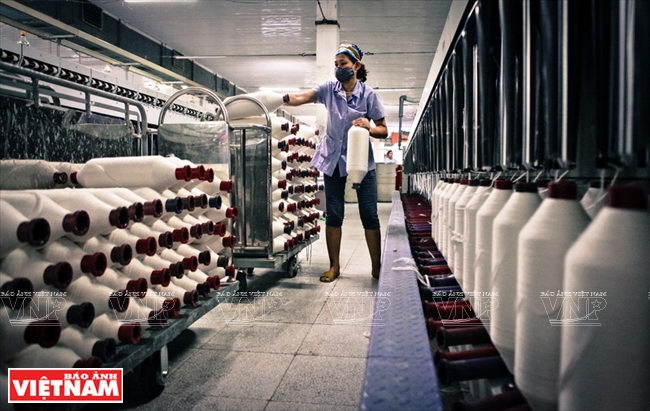
Apart from the dying workshop that has been moved to Hoa Xa Industrial Park, other parts of the
plant are still running. Photo: Cong Dat/VNP
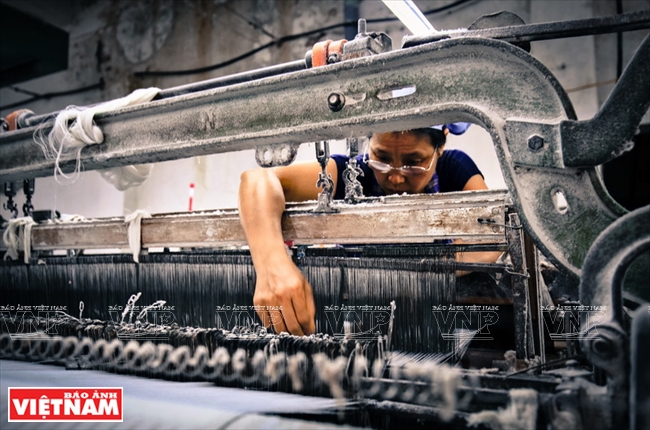
A worker by the side of a machine that is very old. Photo: Cong Dat/VNP
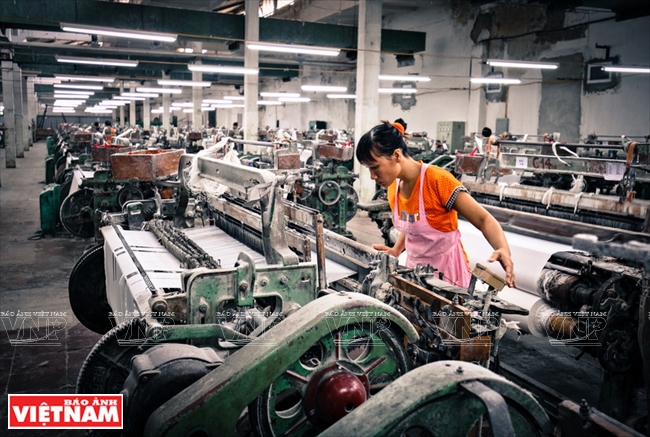
Part of the thread workshop. Photo: Cong Dat/VNP
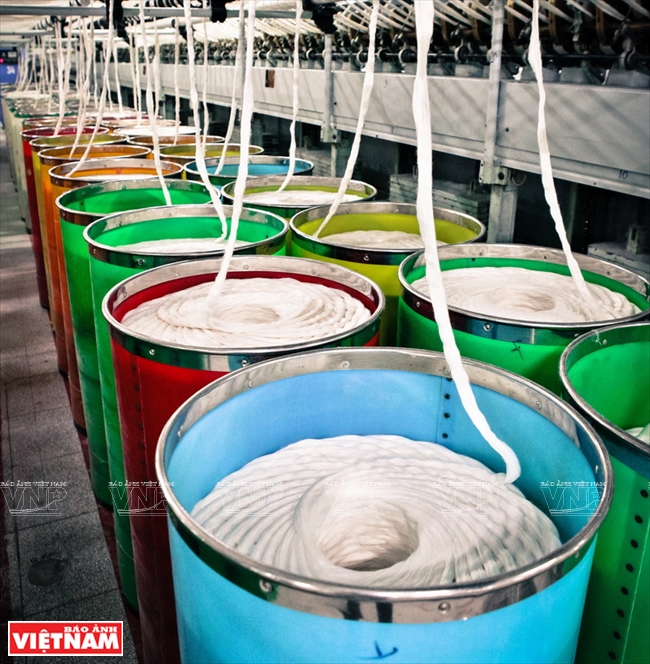
Automatic production inside the plant. Photo: Cong Dat/VNP

Workers in the workshop that has not been moved to the new location. Photo: Cong Dat/VNP
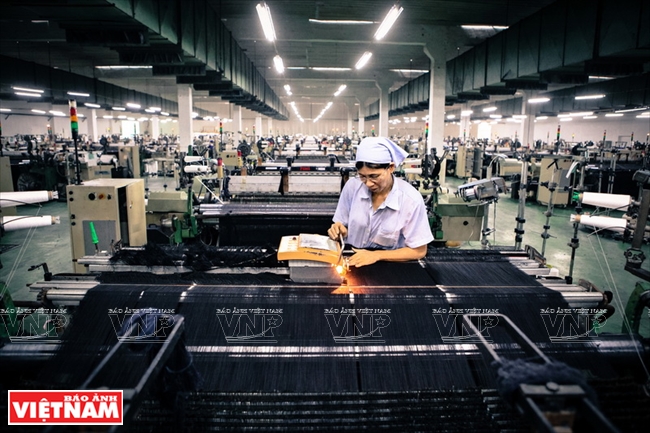
48-year-old Tran Thi Kim Yen has been working there for 25 years.
The plant keeps many memories of her youth. Photo: Viet Linh.
|
Nguyen Van Mieng, Director of Nam Dinh Textile and Garment Corporation (Natexco), opened his old personal notebook to tell us stories about the plant. In 1954, Nam Dinh Textile was taken over by the government and its name was changed to Nam Dinh Textile Plant. At that time, most of its machines were destroyed, few could operate. With the subsidy from the state, the factory was revised and could produce popular products of that time to supply the northern market.
The plant did undergo difficulties during the war against the US, which was deeply felt by its workers. 78-year-old Nguyen Van Som who used to work there said that when the American troops attacked North Vietnam in 1965, Nam Dinh was among the most heavily bombed. Many workshops were destroyed shortly after recovering. The plant had to be dismantled into small units and evacuated to many places to ensure production. Just the thread workshop and part of the textile workshop remained.
After the war, Nam Dinh Textile Plant enjoyed a time of stable production. Thanks to bold steps in changing business and manufacturing manners such as borrowing money from banks to invest in machines, materials and dye in order to diversify its products as well as forming partnership with other domestic factories in production. There were times that the plant offered nearly 18,000 jobs, accounting for 10% of population of Nam Dinh.
In the past, the neighborhood of the plant even had kindergartens for children of workers who worked three shifts a day. There were primary, secondary, high and vocational schools; and amusement facilities. The plant was much like a small society. Even pay days could create changes in prices of Nam Dinh Province, said Nguyen Van Mieng.
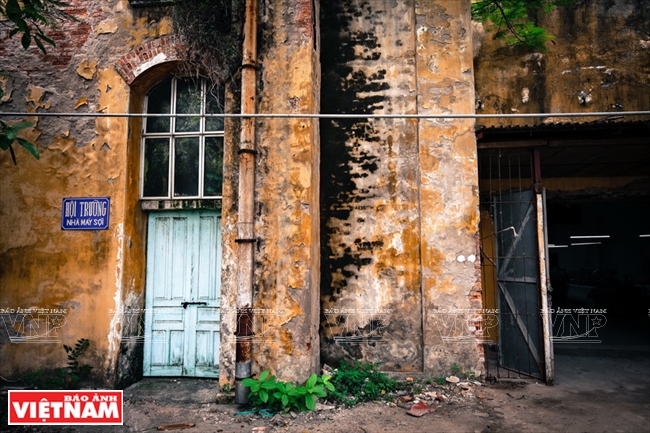
The meeting hall with ancient French architecture is a meeting place of the plant’s leaders and workers.
Photo: Cong Dat/VNP
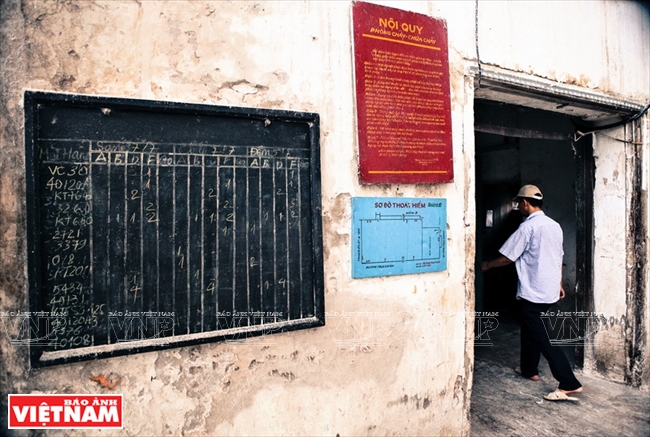
Many residents in Nam Dinh are moved when remembering the past of the plant. Photo: Viet Linh
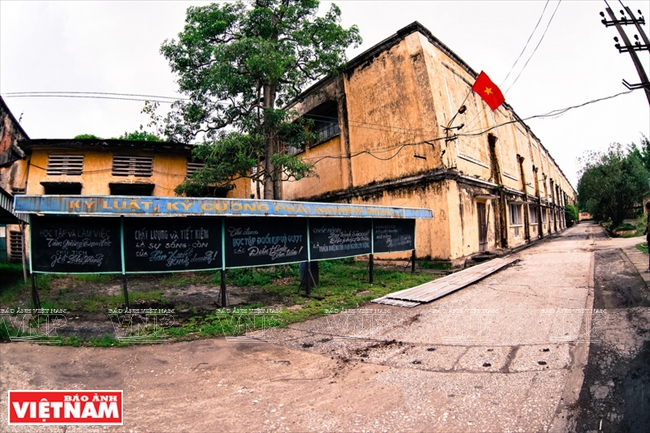
Mottos and slogans of different times are still kept. Photo: Viet Linh
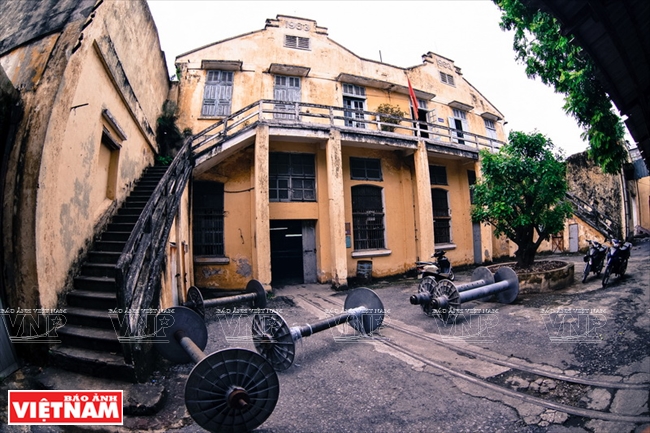
The plant is now downgraded and will be demolished shortly. Photo: Viet Linh
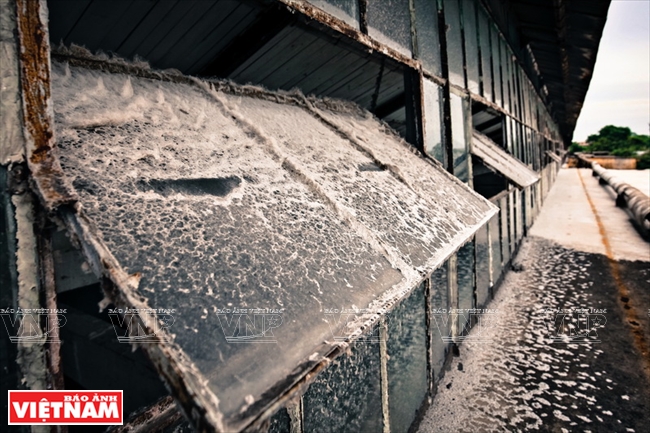
An old window fully covered with cotton dust. Photo: Cong Dat/VNP

The roof of a workshop with unique architecture. Photo: Cong Dat/VNP
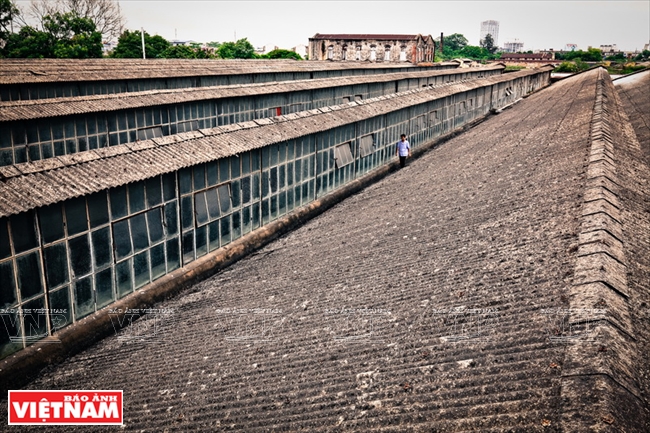
Old glass windows covered with cotton dust near the roof. Photo: Cong Dat/VNP
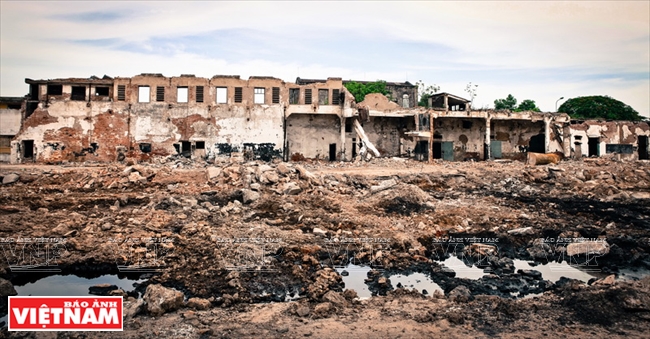
The outer part of the plant has been demolished. Photo: Cong Dat/VNP
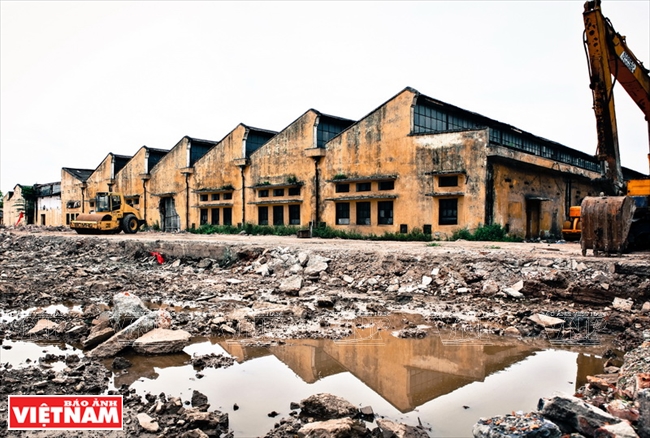
According to Director Nguyen Van Mieng, the old tropical almond tree where the flag of the
first Party Committee of Nam Dinh will be kept. Photo: Cong Dat/VNP
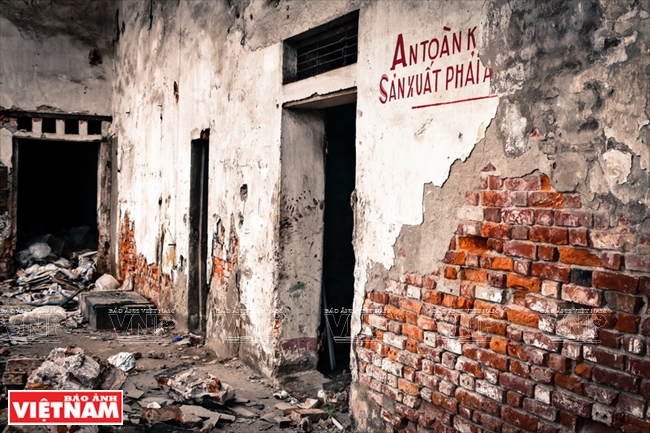
The plant once provided a livelihood for 1/10 of Nam Dinh’s population. Photo: Cong Dat/VNP
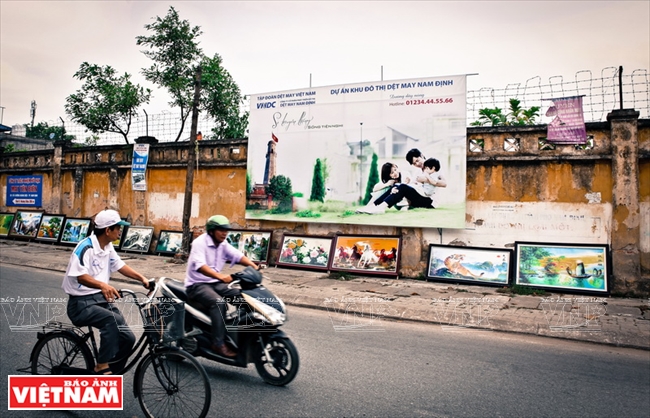
The textile plant is closely connected with the spiritual life of residents in Nam Dinh City. Photo: Cong Dat/VNP |
According to the plan of Nam Dinh Province, the cleared area will be built into an urban residential area. The plant will be moved to an equivalent area in Hoa Xa Industrial Park, which is 5km away from downtown.
By Cong Dat & Viet Linh